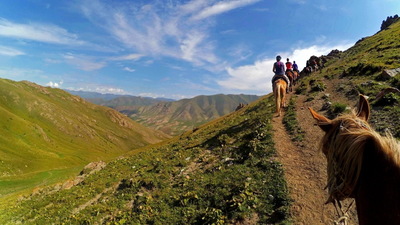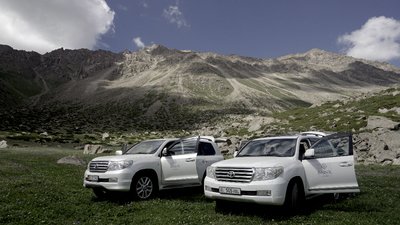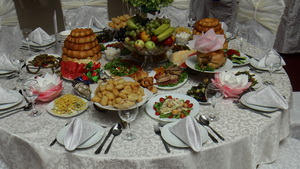Karatal-Zhapyryk state reserve
Our tours passing through Karatal-Zhapyryk state reserve
Baibol services
Karatal-Zhapyryk state reserve – oasis of wildlife in the Naryn region with a unique flora and fauna. The reserve is situated in 16 km South of the famous high-mountainous lake son-Kel.
The state reserve was created in 1994 to preserve the unique nature of rare and endangered species of animals and plants of Central Tien Shan. There are 4 phases included in the protected zone: Karatal, Achates, an area of lakes the Dream-Kol and Chatyr-Kel. The reserve total area is 21 thousand 16 hectares.
The climate of the region is continental, so summers are hot and winters are cold, with the little rainfall, except in the mountainous areas.
The nature reserve is very scenic, due to the amazing variety of landscapes. The lower landscapes are allocated, the more valleys and hills are covered with the variety of grasses, flowers and shrubs: buttercups, pale yellow Edelweiss, Tien Shan and Altai violets, asters, Globe-Turkestan, wormwood, sedge, Tien Shan forget-me-nots, rose hips, and yellow acacia. But Turkestan juniper and Tien Shan spruce grow up in the intermountain and mountain slopes.
Earlier on the reserve the lived Tien Shan brown bears, elk -deer, wild boars and red wolves, however, unregulated hunting, extreme conditions of food production and its shortage has led to the fact that the most of these animals extincted, and the others almost completely disappeared.
Currently, the Karatal-Zhapyryk reserve has become a home to the rest 7 species of birds: mountain goose, black stork, Demoiselle cranes, Golden eagle, Saker Falcon, Himalayan Griffon and Borodacha, and 3 species of rare animals: snow leopard, Turkestan lynx, Tien Shan argali, brought in the Red book of Kyrgyzstan.
The birds are included in the high-risk zone, as well as the ibex, argali, ROE deer, badgers, lynx and 140 species of wading birds inhabiting the lakes of the reserve. This is primarily due to unregulated hunting and fishing, summer fishing, coinciding with the breeding period of the birds.












